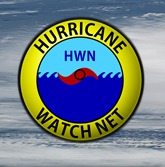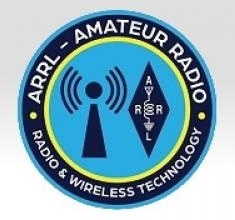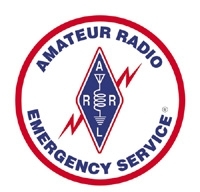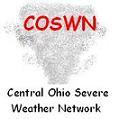 September 22, 2022 John E. Ross, KD8IDJ, Editor
| ||||||
Amateur Radio Operators Track Hurricane Fiona
Amateur radio operators have been reporting weather conditions since Monday, September 19, 2022, and have received positive feedback on their assistance. The VoIP Hurricane Net was active for 14 continuous hours on Sunday, September 18, for Hurricane Fiona, as it pummeled the southern and southwestern portions of Puerto Rico with catastrophic rainfall and flooding with hurricane-force conditions. In the ARRL Puerto Rico Section, Public Information Coordinator (PIC) Angel L. Santana-Diaz, WP3GW, who lives in Trujillo Alto, reported a widespread blackout as the hurricane made landfall on the island. Still, he explained, there were ham radio repeaters that remained on the air with amateurs sharing reports of damage, including downed trees and power poles, and roofs ripped from homes. ARRL Member Pedro S. Labayen, KP4DKE, of Utuado, was mentioned in a Miami Herald article for reporting the significant damage to his rural and mountainous region of the island. The NHC has issued advisories for Hurricane Fiona and Tropical Storm Gaston. Marine warnings are also in effect for the Caribbean and the Southwest Atlantic. As of 2:00 PM EDT (1800 UTC) on Thursday, September 22, the NHC reported that Hurricane Fiona is forecast to pass just west of Bermuda by late Thursday evening, approach Nova Scotia on Friday, and move across Nova Scotia and into the Gulf of St. Lawrence on Saturday. Fiona is a category 4 hurricane with maximum sustained winds near 130 mph (215 km/h) with higher gusts. In advance of the hurricane, the Radio Society of Bermuda activated their Emergency Measures Organization (EMO) on Wednesday, September 21, at 1:43 PM ET and plans to have 14 active amateurs monitoring the hurricane network. Plans are to use local repeaters, unless there's a power loss, then they'll switch to simplex. They're currently monitoring 14.283 MHz and will continue to monitor that frequency. The HWN will be activated on Thursday, September 22, at 5:00 PM EDT/AST (2100 UTC) on the primary frequency of 14.325 MHz. Activation for the 40-meter net on 7.268 MHz will be at 7:00 PM EDT/AST (2300 UTC). The net will be on 20 meters for as long as propagation will allow and will remain active on 40 meters until it's no longer required, or propagation goes away. However, should Hurricane Fiona make direct landfall, operations will resume on Friday, September 23, at 9:00 AM EDT/AST (1300 UTC) to assist with post-storm reports and any outgoing health and welfare traffic, which would be directed toward SATERN. HWN Manager Bobby Graves, KB5HAV, offered some suggestions for amateur radio operators contacting the net. "We look for reporting stations that can provide us with any measured or estimated weather information that we can relay directly to the forecasters at the National Hurricane Center in Miami. Such weather information we look for is maximum sustained winds, wind gusts, wind direction, barometric pressure, and rainfall amount -- how much over x-amount of time, storm surge, and damage," Graves said. "Also, should you have any outgoing health and welfare traffic before, during, or after this event, we are happy to assist as we work closely with the Salvation Army Team Emergency Radio Network." Graves also said, as a reminder, the HWN is available to provide backup communications to official agencies, such as Emergency Operations Centers, American Red Cross officials, and storm shelters in the affected area. They also collect and forward significant damage assessment data to government and non-government officials. Amateur radio operators who want to monitor or participate in the hurricane nets should visit these two useful and informative links: The Hurricane Watch Net - Useful Links Special thanks to HWN Manager Bobby Graves, KB5HAV, and ARRL PIC Angel L. Santana-Diaz, WP3GW for information in this article. Girl Scouts Receive ARRL Radio and Wireless Technology Patches On Saturday, September 10, 2022, the York County Amateur Radio Society (YCARS) in Rock Hill, South Carolina, helped 22 Girl Scouts earn their ARRL Radio and Wireless Technology patch.
The program activity was part of the Girl Scouts Love State Parks annual event. YCARS Outreach Coordinator Vicki Carnes, AD3I, and six other club members presented the program. Other amateur radio operators were available to help the Girl Scouts get on the air and communicate using amateur radio.
Carnes said some of the most enjoyed activities included a hands-on demonstration of Lenz's law that used copper tubing and a magnet, making and using tin cans with string telephones, and coding and decoding words using the phonetic alphabet. The breakdown for the Girl Scouts participating were: 11 Brownies, four Juniors, four Cadettes, two Seniors, and one Ambassador. Carnes said YCARS is very involved in the Amateur Radio Emergency Service® (ARES®), and it was an honor to play a small part in these Girl Scouts' journeys through Girl Scouts of the USA. Engaging their members by getting involved with ARES, Girl Scouts, and other charitable organizations is just one way that YCARS serves its community. Read "Club Station" in the September 2022 issue of QST for more information about how YCARS has rebuilt itself into being an active club, and other ways that they engage their membership by way of public service. "ARRL is eager to encourage opportunities to involve scouts with ham radio," said ARRL Education and Learning Manager Steve Goodgame, K5ATA. "Congratulations to YCARS and the Girl Scouts for an outstanding activity," he added. Annual SET Exercise to Test Skills and Emergency Preparedness The ARRL Simulated Emergency Test (SET) is scheduled for October 1 - 2, 2022. The SET is ARRL's annual national emergency exercise and is designed to assess the skills and preparedness of Amateur Radio Emergency Service® (ARES®) volunteers, as well as those affiliated with other organizations involved in emergency and disaster responses. "The SET provides an opportunity to evaluate equipment and skills, and to gauge the level of preparedness," said ARRL Director of Emergency The SET encourages maximum participation by all radio amateurs and partner organizations, as well as national, state, and local officials who typically engage in emergency or disaster responses. In addition to ARES volunteers, those active in the National Traffic System⢠(NTSâ¢), Radio Amateur Civil Emergency Service (RACES), National Weather Service (NWS) SKYWARN®, Community Emergency Response Team (CERT), and a variety of other allied groups and public service-oriented radio amateurs are needed to fulfill important roles in this nationwide exercise. This year, ARRL introduces a new program of accessible online reporting forms that allow SET participants to report activity directly to ARRL Headquarters. The new forms allow Emergency Coordinators and Net Managers to report traffic and activity. Public Information Officers and Coordinators, as well as Section Emergency Coordinators and Section Managers, can also upload press releases and pictures online. The SET offers volunteers an opportunity to assess equipment, modes, and skills under simulated emergency conditions and scenarios. Individuals can use the time to update a go-kit for use during deployments and to ensure their home station's operational capability during an emergency or disaster. To get involved, contact your local ARRL Emergency Coordinator or Net Manager. Three Hams Make the Most of an Emergency Scenario Three members of the Central Ohio Severe Weather Network (COSWN) found themselves in an unanticipated situation last week as they arrived for their weekly weather net at their operations center in Columbus, Ohio. Amateur radio operators Bradley Howard, KE8SVT; Brian Burley, KE8ANW, and John Ross, KD8IDJ, discovered they didn't have access to the COSWN operations center. All three are experienced operators who regularly carry handheld radios, or have radios mounted in their vehicles. In turn, they decided to treat this as an "emergency scenario" to simulate establishing an emergency communications network in the event of an actual emergency. They went to their cars and accessed what equipment they had and what equipment they would need to set up an Emergency Operations Center (EOC) in the parking lot. They found three folding chairs and an empty 5-gallon bucket for a makeshift table. A mobile radio was pulled from its under-dash mount in Burley's car (connected to a trunk-mounted antenna) and set it on the table. "We all were pretty amazed by how fast it came together -- about 5 minutes," said Ross. "Howard had copies of the scripts and procedures and we were able to get the net up and running on time." Disassembly only took 5 minutes. Burley said he, too, was surprised by the setup speed and was glad he could help. "I believe this underscores the importance of training and working in different scenarios, so we can always be ready for the unexpected," said Howard. "Our commitment to Central Ohio is to be ready when severe weather hits, and we will work to always uphold that responsibility." All three now suggest different training opportunities to ensure COSWN is fully prepared. ***Editor's note*** John Ross, KD8IDJ, is the ARRL News Editor and a member of the COSWN Board of Trustees. COSWN is an ARRL Affiliated Club. Amateur Radio in the News ARRL Public Information Officers, Coordinators, and many other member-volunteers help keep amateur radio and ARRL in the news. "West Allis Amateur Radio Club aims to generate interest in ham radio" / Spectrum News (Wisconsin), September 17, 2002 -- The West Allis Radio Amateur Club is an ARRL Affiliated Club. "STUTSMAN COUNTY HAM RADIO ENTHUSIASTS CELEBRATE 75 YEARS" / NewsDakota.com (North Dakota), September 21, 2022 -- The Jamestown Amateur Radio Club is an ARRL Affiliated Club. Share any amateur radio media hits you spot with us. ARRL Podcasts
The latest episode of the ARRL On the Air podcast includes QST contributor Dino Papas, KL0S. Papas provides insight into the construction and tuning of a J-pole antenna, which he built for On the Air from a design by John H. Unrath, K6JHU. Listen to ARRL Audio News, available every Friday. ARRL Audio News is a summary of the week's top news stories in the world of amateur radio and ARRL, along with interviews and other features. The On the Air podcast is available on iTunes (iOS) and Stitcher (Android). The On the Air podcast and ARRL Audio News are also on Blubrry -- On the Air | ARRL Audio News. Announcements
The Big E Space Chat is GO for Tuesday, September 27, 2022, from "New England's Great State Fair." Hundreds of The Big E attendees and spectators will be able to watch students make a live contact with NASA Astronaut Bob Hines, KI5RQT, who is aboard the International Space Station (ISS). Hines will contact the students via an amateur radio ground station, ON4ISS, in Belgium. The contact is organized through Amateur Radio on the International Space Station (ARISS). Around a dozen youth associated with New England Sci-Tech (NEST), a STEM learning and makerspace center in Natick, Massachusetts, have been selected to participate in The Big E Space Chat. A pre-contact program will begin at 1:20 PM Eastern Time, and will include several speakers including Eastern States Exposition CEO and President Gene Cassidy, ARRL CEO David Minster, NA2AA; ARRL New England Division Director Fred Kemmerer, AB1OC, and New England Sci-Tech President Bob Phinney, K5TEC. More information about the Big E Space Chat can be found on the ARRL New England Division website. A live video stream of the contact will be carried on the NEST YouTube channel at www.youtube.com/watch?v=hdxnD8uF8t0.
In Brief... [Updated 9/23/2022 | This story has been retracted. For more information, see this Facebook post from the Wireless Institute of Australia.] Andy Clift, G6PJZ, has achieved the coveted Summits on the Air (SOTA) Mountain Goat status for reaching 1,000 activator points. His Mountain Goat-qualifying activation took place from Helvellyn in the English Lake District in Cumbria, England. Andy's SOTA journey started back in 2015, when he learned about the program by answering a CQ call from a SOTA activator. He soon activated his first summit -- Rogan's Seat in the Yorkshire Dales in England -- and started, as so many do, a keen obsession over the ensuing years. Reflecting on his achievement, Andy commented, "Without SOTA I would not do anywhere near as much walking. I would not be as active on the radio, and I would not have discovered some of the fantastic smaller Marilyns [parts of larger mountain systems that are situated in protected areas] that people don't bother travelling to." For more information about SOTA, visit www.sota.org.uk.
The K7RA Solar Update Tad Cook, K7RA, of Seattle, Washington, reports for this week's ARRL Propagation Bulletin: Geomagnetic disturbances were down this week, but so were sunspot numbers and solar flux. Average daily sunspot numbers declined from 92.7 to 68, and average daily solar flux declined from 141.3 to 134.3.
Six new sunspot groups appeared this week, the first on September 15, two more on September 19, another on September 20, and two more on September 21. Predicted solar flux is 140 and 138 on September 22 - 23; 130 on September 24 - 27; 120 on September 28; 122 on September 29 through October 2; 120 again on October 3; 122 on October 4 - 7; 125, 122, and 120 on October 8 - 10; 118 on October 11 - 12; 116 on October 13 - 15; 138 on October 16; 135 on October 17 - 18, and 133, 128, 126, 130, and 125 on October 19 - 23. Predicted planetary A index is 10 and 20 on September 22 - 23; 15 on September 24 - 25; 8 on September 26 - 29; 22, 50, 30, and 20 on September 30 through October 3; 12, 15, 12, and 10 on October 4 - 7; 8, 8, 5, and 8 on October 8 - 11; 5 on October 12 - 14; 12, 10, 5, 5, 20, 18, and 12 on October 15 - 21, and 8 on October 22 - 26. The above predictions were made by the Offutt Air Force Base. For information on whether sunspots are really black, visit www.livescience.com/why-are-sunspots-black. I'm pleased to report that the 2022 Autumnal Equinox is Friday, September 23, at 0104 UTC. Both the Northern and Southern Hemispheres will be bathed in equal measures of solar radiation, which is good for HF propagation. Sunspot numbers for September 15 through 21 were 71, 64, 76, 51, 74, 70, and 70, with a mean of 68. The 10.7-centimeter flux was 139.7, 131.1, 131.5, 136.1, 127.9, 137.2, and 136.9, with a mean of 134.3. Estimated planetary A indices were 6, 4, 5, 11, 11, 8, and 5, with a mean of 7.1. Middle latitude A index was 8, 5, 5, 9, 7, 6, and 4, with a mean of 6.9. Send your tips, questions, or comments to [email protected]. A comprehensive K7RA Solar Update is posted Fridays on the ARRL website. For more information concerning radio propagation, visit the ARRL Technical Information Service, read "What the Numbers Mean..." and check out the Propagation Page of Carl Luetzelschwab, K9LA. A propagation bulletin archive is available. For customizable propagation charts, visit the VOACAP Online for Ham Radio website. Share your reports and observations. A weekly, full report is posted on ARRL News.
Just Ahead in Radiosport
Visit the ARRL Contest Calendar for more events and information. Upcoming Section, State, and Division Conventions
Search the ARRL Hamfest and Convention Database to find events in your area. Have News for ARRL? Submissions for The ARRL Letter and ARRL News can be sent to [email protected]. -- John E. Ross, KD8IDJ, ARRL News Editor
ARRL -- Your One-Stop Resource for
Subscribe to...
Free of charge to ARRL members...
| ||||||
 The National Hurricane Center (NHC), the Hurricane Watch Net (HWN), the Voice over Internet Protocol (VoIP) Hurricane Net, and the Salvation Army Team Emergency Radio Network (SATERN) all have been engaged in tracking Hurricane Fiona.
The National Hurricane Center (NHC), the Hurricane Watch Net (HWN), the Voice over Internet Protocol (VoIP) Hurricane Net, and the Salvation Army Team Emergency Radio Network (SATERN) all have been engaged in tracking Hurricane Fiona. Created in 2016, the
Created in 2016, the 
 Management Josh Johnston, KE5MHV. "Additionally, it helps with interaction between other amateur radio operators and strengthens the level of training we all have."
Management Josh Johnston, KE5MHV. "Additionally, it helps with interaction between other amateur radio operators and strengthens the level of training we all have."
.jpg)


-Blue.jpg)








